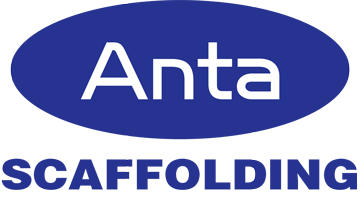Cuplock Scaffolding Components Explained: Ledgers, Standards, And Braces
Scaffolding is an integral part of the construction industry, providing support and access to workers as they build, repair, or maintain structures. Cuplock scaffolding is a popular choice due to its ease of assembly, durability, and versatility. This article will delve into the various components of Cuplock scaffolding, focusing on ledgers, standards, and braces. Understanding these essential elements will help you make informed decisions when planning and setting up your scaffolding system.
Ledgers

Ledgers are horizontal members that connect the standards (vertical poles) in a Cuplock scaffolding system. They provide lateral support and distribute the load evenly across the scaffold structure. Ledgers come in various lengths to accommodate different scaffold configurations, allowing for versatility in design. To attach ledgers to standards, a cup joint is used, providing a secure connection that is quick to assemble and disassemble.
In addition to connecting standards, ledgers also play a vital role in bracing the scaffolding system. By diagonally bracing ledgers between standards, the overall stability of the scaffold is increased, preventing swaying or movement during construction activities. It is essential to follow the manufacturer's guidelines on ledger spacing and bracing to ensure the structural integrity of the scaffold.
Standards
Standards are vertical poles in a Cuplock scaffolding system that provide the primary support for the scaffold structure. They are available in various sizes to accommodate different scaffold heights and load requirements. Standards have cup joints at regular intervals, allowing for easy attachment of ledgers and braces. The cup joint design ensures a secure connection without the need for additional bolts or clamps.
When setting up standards, it is essential to ensure they are plumb and securely anchored to the ground or supporting surface. Properly aligned standards will ensure the stability and safety of the scaffold system. Additionally, standards should be spaced according to the manufacturer's specifications to support the anticipated load and maintain structural integrity.
Braces
Braces are diagonal members that connect the ledgers and standards in a Cuplock scaffolding system. They provide additional lateral stability and prevent the scaffold from swaying or collapsing under load. Braces are available in different lengths to accommodate various scaffold configurations, allowing for flexibility in design. Proper placement of braces is essential to ensure the overall stability of the scaffold structure.
There are two main types of braces used in Cuplock scaffolding: horizontal braces and diagonal braces. Horizontal braces connect ledgers at the same level, while diagonal braces connect ledgers and standards diagonally. Both types of braces work together to reinforce the scaffold system and prevent it from shifting or tilting during construction activities. It is crucial to follow the manufacturer's guidelines on bracing to ensure the safety of workers and the integrity of the scaffold structure.
Accessories
In addition to ledgers, standards, and braces, Cuplock scaffolding systems can be enhanced with various accessories to improve safety, efficiency, and functionality. Some common accessories include toe boards, guardrails, ladder brackets, and adjustable base plates. Toe boards help prevent tools and materials from falling off the scaffolding platform, while guardrails provide additional fall protection for workers. Ladder brackets allow for easy access to different scaffold levels, while adjustable base plates ensure stability on uneven ground surfaces.
When choosing accessories for your Cuplock scaffolding system, it is essential to consider the specific requirements of your project and the safety regulations in your area. Properly installed accessories will enhance the performance and safety of the scaffold system, creating a secure work environment for construction activities. Consult with your scaffolding supplier to determine the best accessories for your specific needs and ensure compliance with safety standards.
Maintenance and Inspection
Proper maintenance and regular inspection of Cuplock scaffolding components are crucial to ensure the safety and integrity of the scaffold system. Inspect all components for damage, rust, or wear before each use, and replace any defective parts immediately. Clean all components regularly to remove dirt, debris, and other contaminants that could weaken the structure or compromise safety.
When dismantling the scaffold system, carefully inspect each component for any signs of damage or wear. Store components in a clean, dry environment to prevent rust and corrosion. Conduct periodic inspections of the entire scaffold system to identify any potential issues or safety hazards. By maintaining and inspecting Cuplock scaffolding components regularly, you can ensure the safety of workers and the longevity of the scaffold system.
In conclusion, Cuplock scaffolding is a versatile and durable system that provides essential support for construction activities. Ledgers, standards, braces, and accessories are key components of Cuplock scaffolding, each playing a crucial role in the stability and safety of the scaffold structure. By understanding the function and proper installation of these components, you can create a secure work environment for construction projects. Regular maintenance and inspection of Cuplock scaffolding components are essential to ensure the safety and integrity of the scaffold system. Consult with your scaffolding supplier for guidance on selecting the right components and accessories for your project, and always adhere to safety regulations and best practices when setting up and using scaffolding systems.

